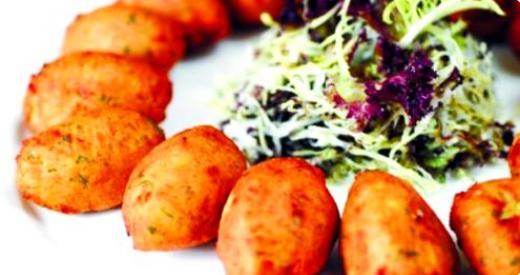
Macanese cuisine is frequently characterised as a fusion of Portuguese and Chinese. However, it is more than a simple mix of flavours and dishes from the two culinary traditions. More accurately, it is a Creole food, evolved from its parent cultures over many centuries with its own unique dynamic and identity. From the mid-1500s, trade in Macau has played an important role in shaping its food culture. When Portuguese merchants established on-shore trading depots in Macau as a base of operations for trade with China, they also brought dietary staples from their European homeland as well as spices and preserved foods from Goa, Malacca, Mozambique, Brazil, East Timor and Thailand, where they had already established a strong colonial presence.
Since intermarriage between the Portuguese and local Chinese in Macau was fairly common, by extension, it created the natural union of food techniques and ingredients from the two parent cultures. In the beginning, Macanese dishes were often adaptations of the Portuguese cooking styles with substitutions of local meats and cheaper agricultural products. The Portuguese brought with them their heavy use and taste for Bacalhau (salted and sun-dried codfish), which since the early 16th century has been a mainstay of the Portuguese diet. Other non-perishable staples, such as olive oil, chilli, saffron, chouriço sausage and Portuguese wine, all form the foundation of Macanese cuisine.
Classic Portuguese dishes, prepared by wives and servants brought over from the far-flung regions of the Portuguese empire, were adapted and accented with spices from Goa, Malacca, Brazil, and Mozambique. Macau’s most iconic dish Galinha à Cafreal (African chicken) showcases the culinary influences from the colonies; the blackened barbecued chicken is seasoned with turmeric from India, basted with coconut milk from Malaysia, and covered with African piri piri peppers. Macanese cooking incorporates the use of saffron, coriander, cumin, cloves, cinnamon bark, curry powder and fenugreek.
While Portuguese culinary traditions are at the foundation of Macanese cuisine, Cantonese flavours and cooking styles have over the years played an increasingly predominant role in shaping Macau’s food culture. Soya sauce became an essential part of the Macanese flavour profile, as well as other native Chinese ingredients: shrimp paste, Shaoxing wine, star anise, and lap cheong (a slightly sweet dried sausage). Steaming and wok-frying became a regular part of the home cook’s repertoire, leading to the chau-chau dishes which borrows its name from the Chinese term chao (wok-fry). Rich offal dishes, such as sarrabulho or pato cabidela might well have been inspired by the techniques of the nomadic Hakka people.
Although the pork chop bun is a favourite enjoyed among locals in Macau, it is not considered as part of Macanese cuisine. Until fairly recently, the dishes closely associated with Macanese cuisine were not in restaurants, but could only be found within domestic kitchens of local households, where cooking techniques have developed over generations and remain a closely guarded family secret. Due to the fact that so many Macanese have dispersed, and with them generations of recipes and cooking techniques, there has been a concerted effort to keep the Macanese culinary tradition thriving.
With visitor arrival to Macau having exceeded 28 million people last year in 2011, and Macau Government Tourism Office Director Joao Manuel Costa Antunes implementing a long term global plan to position Macau as a World Centre of Tourism and Leisure, the rich diversity and history behind Macanese cuisine can be spread across the world. 2012 brings with it the grand opening of the Sheraton Macao Hotel, taking its place alongside the iconic fluorescent lights of the Venetian and the Hotel Lisboa on the island. With the number of international visitors rising by 2.2% , reaching 3 million and the growth of Mainland Chinese visitors rising by 13.5% to nearly 25 million visitors, the understanding and appreciation of the unique blend of colonial cultures coupled with Chinese influences in Macanese cuisine will be able to be found on a global scale.









